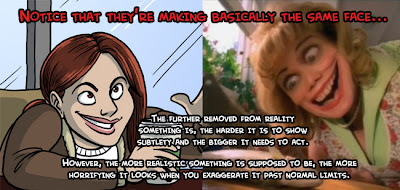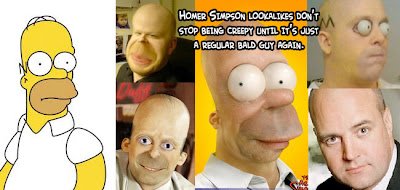Uncanny valley - Wikipedia, the free encyclopedia
The uncanny valley is a hypothesis regarding the field of robotics.[1] The hypothesis holds that when robots and other facsimiles of humans look and act almost like actual humans, it causes a response of revulsion among human observers. The "valley" in question is a dip in a proposed graph of the positivity of human reaction as a function of a robot's lifelikeness.A number of design principles have been proposed for avoiding the uncanny valley:
Collected from: Uncanny valley - Wikipedia, the free encyclopedia
Collected from: YouTube - The Uncanny Valley
If you want something non-human to emote like a human, you can’t just slap human eyes on it and call it a day.
When cartoony characters move like humans, you get that cheap rotoscope/mo-cap look, but when real people move like cartoons you get the Black Hole Sun music video;
Cartoon characters with human skin stretched over them just look horrible:
Collected from: Manly Guys Doing Manly Things - Close But No Cigar
Most Realistic Android Yet: Have We Passed the Bottom of the Uncanny Valley? | Discoblog | Discover Magazine
His name is Geminoid DK, and yes it’s a he: Henrik Scharfe of Denmark’s Aalborg University worked with Japan’s Kokoro entertainment company to create this avatar of himself. The android holds the distinction of being the first Geminoid modeled after a non-Japanese person (it’s also the first facial-haired bot of the lot).
Collected from: Most Realistic Android Yet: Have We Passed the Bottom of the Uncanny Valley? | Discoblog | Discover Magazine




